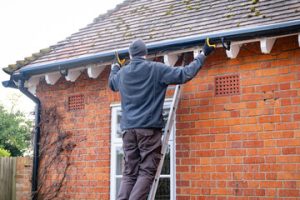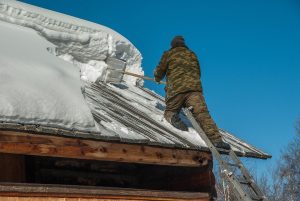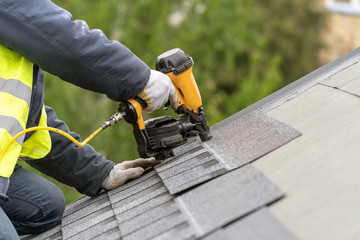Gutters play a crucial role in protecting any property from water-related damage by directing rainwater away from the roof, walls, and foundation. When gutters become clogged, damaged, or misaligned, they lose their ability to perform effectively, putting the structure at risk of costly repairs. Comprehensive gutter inspection and repair services ensure that gutter systems remain functional, durable, and efficient throughout the year. Whether for residential homes or commercial buildings, routine inspections and targeted repairs help maintain optimal performance and safeguard properties against the long-term effects of water intrusion. Professional Gutter Installation Gainesville FL services can enhance the overall safety and efficiency of your property.

Regular gutter inspections are essential because gutter issues often develop gradually and go unnoticed until substantial damage has already occurred. Over time, debris such as leaves, twigs, dirt, and roofing granules accumulates inside the gutter channels. These blockages prevent water from flowing freely, causing overflow during rainfall. Overflowing water can seep into the roofline, damage exterior walls, or settle near the foundation. Comprehensive inspection services involve carefully examining each part of the gutter system—such as the channels, downspouts, joints, seams, hangers, and alignment—to ensure everything is functioning as expected. By identifying potential issues early, property owners can address them promptly and avoid extensive repair costs.
One of the most common problems identified during inspection is gutter sagging. Gutters are designed to slope slightly to guide water toward the downspouts, but when debris accumulates or when hangers loosen over time, sections of the gutter may begin to sag or pull away from the roofline. Sagging gutters disrupt proper water flow and lead to pooling in certain areas, eventually causing leaks, corrosion, or structural damage. Professional repair services include tightening hangers, reinforcing brackets, and repositioning sections to restore the proper pitch. These adjustments not only improve flow efficiency but also help prevent long-term issues such as wood rot or water infiltration.
Another issue often detected during gutter inspections is the presence of leaks or holes. Gutters can develop cracks or separations due to harsh weather conditions, age, or debris impact. Even small leaks can cause significant damage over time by allowing water to drip onto exterior walls or perimeter soil. During a comprehensive inspection, technicians locate these vulnerabilities and apply sealing solutions, patch holes, or replace damaged sections entirely. Addressing leaks during the early stages prevents more severe problems such as mold growth, soil erosion, and foundation instability.
Downspouts are another critical component of the gutter system that often requires repair and maintenance. Even if the main channels are functioning correctly, a clogged or misaligned downspout can cause water to back up and overflow. Comprehensive inspection services include evaluating the angle, placement, and condition of downspouts to ensure they direct water safely away from the property. Technicians may clear internal blockages, tighten connections, or extend the downspout’s reach to enhance drainage efficiency. This ensures that rainwater flows freely from the roof all the way to the designated runoff area.
One of the key advantages of professional gutter inspection services is the thoroughness that experts bring to the process. Property owners may not always recognize the subtle signs of gutter deterioration. Professionals, however, are trained to identify early warning indicators such as rust spots, peeling paint, damaged seals, or loose fasteners. They also assess structural factors such as fascia board integrity, gutter alignment, and overall gutter capacity. This attention to detail ensures that all potential issues are addressed before they escalate into costly problems.
Timely gutter repairs are essential for maintaining year-round efficiency, especially during seasons of heavy rainfall. Without proper repairs, minor problems can quickly escalate and compromise the entire system. For example, a loose joint may not seem urgent at first, but during a storm, it can become a major leak point that leads to water infiltration. Similarly, a small crack in the gutter channel can expand over time due to temperature fluctuations and debris pressure. Comprehensive repair services address these vulnerabilities by providing immediate solutions that restore the gutter’s full functionality.
Repairing gutters also improves overall energy efficiency within the property. Water that seeps into walls, ceilings, or roof structures due to faulty gutters increases indoor humidity levels. High moisture levels can compromise insulation, leading to higher heating and cooling costs. By ensuring gutters are functioning properly, property owners can maintain better indoor temperature control and prevent the deterioration of insulation materials. This makes comprehensive gutter inspections and repairs not only important for structural safety but also for long-term energy savings.
Another major benefit of year-round gutter efficiency is the prevention of pest infestations. Stagnant water and accumulated debris create ideal conditions for insects, rodents, and birds to nest. These pests can cause significant damage to both the gutter system and the property’s structure. Regular inspections help prevent these conditions by ensuring the gutters remain dry, clean, and free of blockages. Repair services eliminate entry points and vulnerabilities that pests might exploit, helping maintain a cleaner and safer environment around the property.
Comprehensive gutter inspection and repair services also contribute to extending the lifespan of the gutter system. Just like any other property component, gutters require ongoing care to stay in good condition. Routine inspections identify areas that need reinforcing, while repairs ensure that wear and tear are addressed promptly. This proactive maintenance prevents premature system failure and reduces the need for costly replacements. Property owners benefit from long-term savings and continued peace of mind knowing their gutters are functioning at peak performance.
To emphasize the advantages of regular gutter care, here are two essential components of comprehensive inspection and repair services:
- Detailed System Assessment – This includes evaluating the condition of gutter channels, downspouts, joints, hangers, and seals. Technicians look for issues such as clogs, leaks, corrosion, sagging, and misalignment that could compromise water flow.
- Targeted Repair Solutions – After inspection, professionals perform repairs that may include sealing leaks, tightening fasteners, patching holes, clearing downspouts, and restoring the correct pitch to ensure efficient water drainage.
These services offer property owners a proactive approach to maintaining gutter efficiency throughout every season. Instead of waiting for visible signs of damage, comprehensive inspections provide early detection, while targeted repairs resolve issues quickly and effectively. This preventative strategy helps prevent emergencies, reduces maintenance costs, and ensures the gutter system remains strong and durable throughout the year.
Another important element of year-round efficiency is the customization available through professional gutter services. Properties come in many shapes and sizes, each with unique rooflines, drainage needs, and environmental exposures. Comprehensive inspection and repair services take these factors into account to deliver tailored solutions. Whether the property requires larger-capacity gutters due to frequent heavy rainfall or reinforced brackets to accommodate high winds, customized repair strategies help optimize performance and protect the structure more effectively.
Seasonal changes can also have a significant impact on gutter performance, making year-round inspection especially important. During autumn, falling leaves create blockages that interfere with water flow. Winter temperatures may cause ice buildup that strains gutter joints. Spring storms bring heavy rains that test the system’s capacity and durability. Comprehensive gutter services address these seasonal challenges by preparing the system ahead of time and repairing any damage caused by changing weather conditions. This keeps the gutters functioning efficiently from one season to the next.
Aesthetic appeal is another benefit of proper gutter maintenance. Damaged or overcrowded gutters can make a property look neglected, reducing curb appeal and creating a poor first impression. Repairing and maintaining the gutter system ensures that the exterior of the home or business looks neat, well cared for, and structurally sound. Clean lines, rust-free surfaces, and properly aligned channels enhance the overall visual appearance of the property.
For business owners, comprehensive gutter inspection and repair services also contribute to maintaining a safe environment for employees, customers, and visitors. Water pooling around walkways, entrances, or parking areas due to faulty gutters can create slip hazards. By ensuring that gutters are directing water safely away from high-traffic areas, businesses reduce liability risks and maintain a safe, accessible environment for everyone.
In conclusion, comprehensive gutter inspection and repair services are essential for maintaining year-round efficiency and protecting properties from the damaging effects of water. From identifying early signs of wear to performing targeted repairs that restore optimal function, these services play a crucial role in safeguarding homes and businesses. Regular inspections help detect issues before they escalate, while timely repairs ensure consistent performance and reduced maintenance costs. By investing in expert gutter care, property owners can enhance structural integrity, prevent water-related damage, improve energy efficiency, and extend the lifespan of their gutter systems. With year-round attention and professional expertise, gutters remain strong, reliable, and capable of delivering the protection every property needs.



